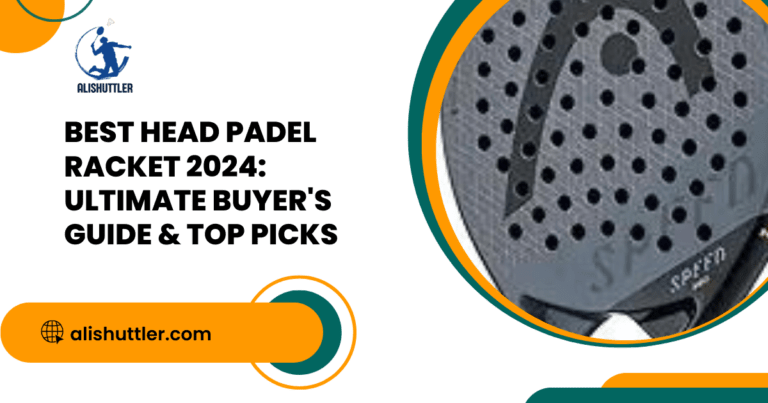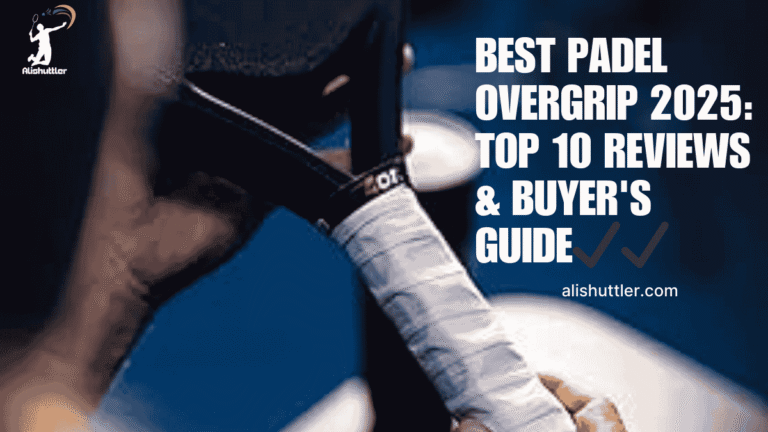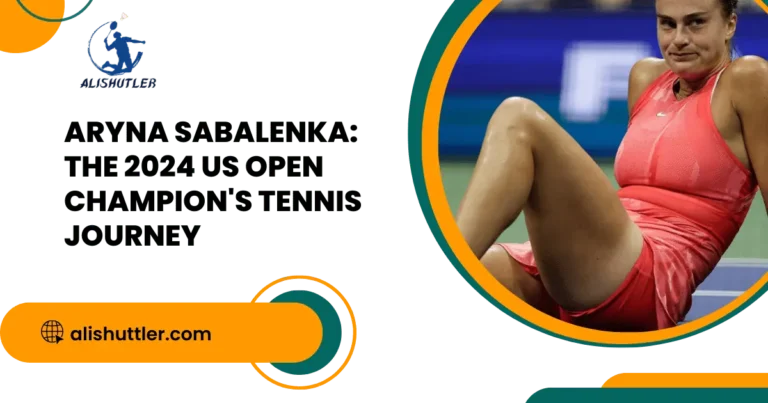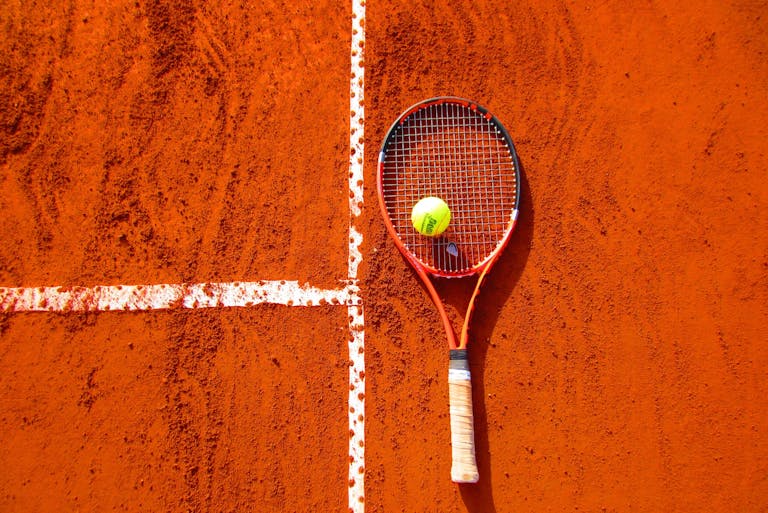Tennis court cleaning refers to removing debris, leaves, and stains from the court’s surface to maintain its safety and ease of play. Clean courts prevent slides and allow matches to continue uninterrupted.
The majority of courts require brushing, water washing and occasionally a mild cleaning soap. With the right care, a court can have more longevity and visual appeal.
The following sections illustrate quick tips and equipment for efficient, incidental court cleaning.
The Unseen Opponent
A pristine tennis court is not only a playing surface; it forms the safety, play, and mindset for every player who walks on it. The unseen opponent, the true difficulty, is not just your foe across the net but the proper tennis court maintenance required to keep it in top shape.
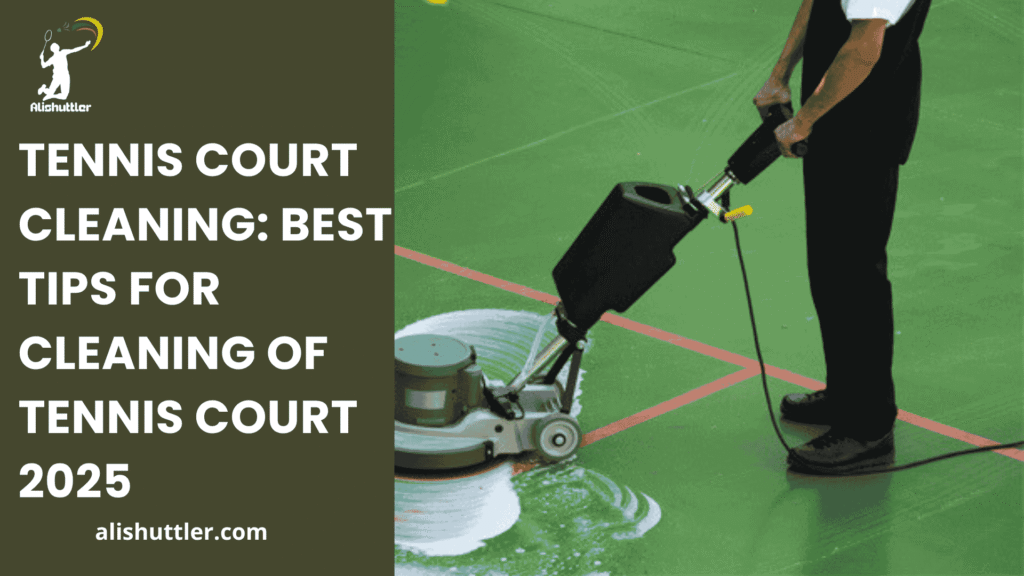
1. Player Safety
Loose sand, leaves and debris can turn any court into a slip and slide. Sweeping the court before play, even the baseline, is a habit that many players develop–some even taking cues from the pros, such as Nadal. This, of course, not only keeps the court safe but assists players in judging if balls are in or out.
Sprinkling the slick surface with mold and mildew. Proper shoes provide additional traction, and adherence to a maintenance schedule ensures problems like these are resolved before somebody is injured.
2. Court Lifespan
Regular washes are essential for proper tennis court maintenance, preventing grit and organic material from abrading the court surface. If micro-cracks or chips appear, quick intervention with an appropriate tennis court cleaning detergent can prevent them from developing into expensive repair-worthy issues. Use cleaning products that are suitable for the court’s material—harsh chemicals can cause more damage than they are worth, so mild detergents are ideal for surface cleaning.
Inspections catch problems before they become too difficult, helping you to maintain your court in top condition for years to come. Routine maintenance, including the use of a tennis court cleaning machine, extends the lifespan of the court, ultimately saving owners time and money over time.
An abandoned court can build issues like mud and stubborn dirt that linger undetected until they impact play or require costly restoration. Regular cleaning help is crucial to ensure the court remains functional and visually appealing.
3. Playability
A clean court is fair game for all. Puddles or debris can screw up the bounce and speed of the ball, resulting in uncertain matches. Eliminating these keeps the game moving as it should. Others rely on small rituals—such as wiping the baseline before serving—to keep concentration and prep the court.
Checking for minor dips or bumps ensures that each bounce is true, while light sweeping prevents slick spots that could catch even the most careful player. Court care constancy enables all players—rookies to pros—to count on the surface beneath their feet.
This trust keeps them rooted, using performance hooks such as ‘one point at a time’ to play their best.
4. Surface Integrity
Mild soap and water usually do the trick, and sealant after the fact protects the court’s finish. Observing for signs of wear allows issues to be intercepted early, not post damage. Good drainage is essential—puddling water will degrade the surface.
Well-kept courts stand up to daily play. Little fixes now stop bigger problems later. Drainage matters. Stay ahead with simple checks.
5. Visual Appeal
Maintaining the court immaculate keeps it looking great and attracts players. Simple leaf or bird dropping stains wash away, leaving a bright, welcoming surface. Seasonal cleanings take care of weather changes or falling debris.
A crisp court and clean surroundings create the ideal environment for a great playing experience.
Surface-Specific Protocols
Each tennis court surface, whether hard, clay, grass, or artificial turf, demands its own specialized tennis court cleaning solution and maintenance protocols. The proper tools, such as a tennis court cleaning machine, and procedures go a long way toward maintaining safe play and preserving the surface. A surface-specific checklist for each court ensures nothing is overlooked — and consistent tennis court maintenance can keep courts playable year-round.
Hard Courts
A hard court should receive a full pressure wash every 1-2 years. This clears mildew, dirt and old stains that cling to the acrylic surface. Always spray with the proper nozzle and pressure—excess force will eat through the coating or chip it.
Weekly sweeping is non-negotiable. Loose debris, leaves, grit – all can scratch the surface if left too long. Sweep or blow court with a soft broom or blower before play or after storms. For stubborn chalk or spilled drinks, clean with a specialized acrylic court cleaner.
Spritz the cleaner, allow to dwell, and then lightly brush with a soft bristle brush. Check surface frequently for cracks, particularly after heavy use or inclement weather. Seal any cracks immediately to prevent water intrusion and more serious damage. Include a winter prep seasonal check–drain clear water, cover the court as needed and keep drains open.
Clay Courts
Clay courts, such as Har-Tru, require daily maintenance to ensure proper tennis court maintenance and remain level and playable. Watering is crucial—maintain the clay just moist, generally by a fine mist, to prevent dust and retain the surface layer. To enhance tennis court surface cleaning, drag the court every day with a mat or broom to smooth out the surface, break up small clumps, and fill in play-induced low spots — particularly at the baselines and service boxes.
Line tapes must be brushed with a line broom to maintain their cleanliness and visibility. For effective cleaning help, sweep the surface gently with a soft-bristle broom to remove leaves and debris. Avoid stiff brushes, as they can damage the clay. Keep an eye out for mold along shaded edges and remove it as it grows.
Har-Tru courts require approximately 2.5 cm of clay. Top-up or level clay as needed and use less invasive implements for brand-new courts until the surface stabilizes. Pre-winter, ensure a thorough cleaning by leveling the surface, lowering the net, and covering if available.
Grass Courts
Grass courts require mowing to maintain the evenness of surface and the shortness of grass. Raise mower blades to the correct height for the species employed—typically 8–13 mm—and mow 2 or 3 times a week. Loosen the soil every month to enable water to drain and roots to grow.
Remove organic debris such as leaves with a soft rake or by hand to protect the turf. For any stuck-on grimes, apply a mild cleaning solution, like diluted soap and water. Check for worms or grubs – especially in the warmer months, and treat with safe products if necessary.
In dry or wet seasons, mow and water as appropriate to the weather.
Artificial Turf
Employ a turf cleaning machine once a month to agitate the dirt and mini debris from synthetic courts. For everyday maintenance, sweep a soft brush across the blades to keep them upright and fresh-looking. Inspect the infill—the sand or rubber layer inside the turf—every few weeks.
Add additional if you notice any bare spots or low spots. Check for seams and edges that can potentially come loose or wear. Patch these up with some turf glue or have a pro come out if necessary to eliminate tripping hazards. Brush more frequently in heavy rains, or in dusty environs.
Essential Cleaning Toolkit
Tennis court cleaning demands a little more than a quick swipe. The proper collection of tools and supplies not only keeps the court safe and playable, but even extends the surface’s life. Every court — hard, clay or synthetic — demands its own care, so your equipment and solutions should be appropriate for the surface.
Below are the essentials for a reliable tennis court cleaning toolkit:
- Broom or soft-bristled brush for surface sweeping
- Dustpan and shovel for loose debris removal
- Mop for wet cleaning
- Pressure washer for hard surfaces
- Commercial floor scrubber or court cleaning machine
- Eco-friendly and mild cleaning agents
- Safety gear: gloves, goggles, masks, knee pads
- Storage rack or caddy for organization
Manual Tools
A broom or brush is imperative for sweeping up leaves, dirt and litter. These soft-bristled brushes are ideal for scrubbing court surfaces, since they won’t scratch or abrade the materials. For outdoor courts, frequent sweeping—minimum once a week if regularly used—keeps grime from bonding and wrecking the court.
Dustpans and shovels are great for scooping up the mess once you’ve swept. These tools maintain a clean court and prevent sharp or abrasive particles from being ground into the playing surface. Mops are essential only when it comes to wet cleaning.
Follow with a mop of mild detergent solution for deep cleaning — particularly for indoor courts done once a year. Store all these tools on a rack or in a rolling caddy for convenient access, and each cleaning session will hum along efficiently.
Mechanical Aids
Pressure washers can come in handy for deep cleaning – particularly on hard surfaces that tend to accumulate mildew or stubborn marks. Take steps to avoid damage with lower pressure settings and a wide spray.
For bigger courts, a commercial floor scrubber can reduce cleaning time and save labor. Certain venues opt for dedicated court machines designed for tennis surfaces. These beasts tackle dirt, dust and even water with ease.
Automated cleaning systems, although an investment, do facilitate scheduled cleaning, particularly in busy or multi-court complexes.
Cleaning Agents
The finest cleaners are effective, yet don’t damage the court. While eco-friendly cleaners are a no-brainer and keep nasty chemicals away from nature. For mildew or tough grime, a solution of four parts water, two parts TSP and one part bleach works well.
Always select a cleaning product for the court’s specific surface type—certain coatings or materials will stop functioning if the wrong agent is applied. Test any new cleaner on an inconspicuous area first to prevent surprises.
Protective Gear
Gloves protect hands from cleaning chemicals and coarse debris. Safety goggles protect your eyes from injury if you’re using sprays, pressure washers, etc.
Wear knee pads for ease if you have long cleaning sessions on hard ground. Masks will work if there is dust or if you are using agents with strong fumes.
The Cleaning Cadence
Maintenance of a tennis court is not a single effort. Maintenance has to coincide with the court’s use and location. All courts, outdoor or indoor have to have their own plan. The timing shifts due to weather, court surface and foot traffic. Routine care extends court life, keeps play safe, and avoids costly repair expenses.
Below is a breakdown of cleaning tasks by frequency:
- Daily: Remove debris, check for damage or hazards, clear drains, maintain nets and posts.
- Weekly: Inspect surface for cracks or stains, deep clean nets, clear drainage, check cleaning supplies.
- Monthly: Deep clean court, reapply surface protection, repair minor issues, assess overall condition.
- Annually: Complete inspection, consider resurfacing or upgrades, review maintenance strategy, plan improvements.
Daily Tasks
Lighter debris such as leaves, dirt and litter should be broomed off the court, daily. This maintains the cleanliness of the surface and prevents buildup that may inhibit play or damage the surface. In the fall, it’s even more important to clear away leaves, as they trap moisture and can stain or mold.
A daily walkover should inspect for cracks, uneven spots, or hazards such as loose nails or broken net ties. Quick fixes keep little problems from growing into big repair jobs. Inspect drainage grates or channels to ensure water flows freely after a rain.
Drains, if they clog, cause water to pool and thus wear down the surface even faster. Nets and posts require a swift mop and tautness inspection to ensure they’re firm and free from dirt for every game.
Weekly Checks
Once a week, get closer and look for stains, cracks or wear that can be missed in daily sweeps. High use outdoor courts or those in dusty locations should be cleaned weekly—more so during rainy or stormy seasons.
Nets and posts, clean with mild soap and water. So does the vicinity of the court — benches, doorways and whatnot — to maintain the neatness of the complex.
Drainage systems should get a weekly clear-out, particularly in wet climates. Blocked drains = standing water = weakens court surfaces. Scout supplies such as brooms, brushes and cleaners to ensure that you have enough for the upcoming week — running out impedes regular care.
Monthly Actions
- Sweep the entire surface to dislodge dust, grit and organic matter, then wet-clean the court using a soft bristle brush and a mild detergent solution. This monthly deep cleaning is crucial for both indoor and outdoor courts but is even more vital for indoor courts where vacuuming just isn’t sufficient.
- Touch up any sealants or protective coatings over painted or acrylic surfaces. This step aids the court to reject future stains and scuffing.
- Check all lines and court markings for fading or peeling. Fix small cracks or chips immediately so they don’t spread.
- Survey the court’s general condition, modify cleaning schedules and record any refurbishments for posterity. Tracking the log allows you to catch trends and schedule resurfacing that’s typically required every 4–8 years.
Annual Overhauls
An annual checkup with a court specialist each spring is wise. A pro can identify underlying issues and recommend repairs prior to prime play season.
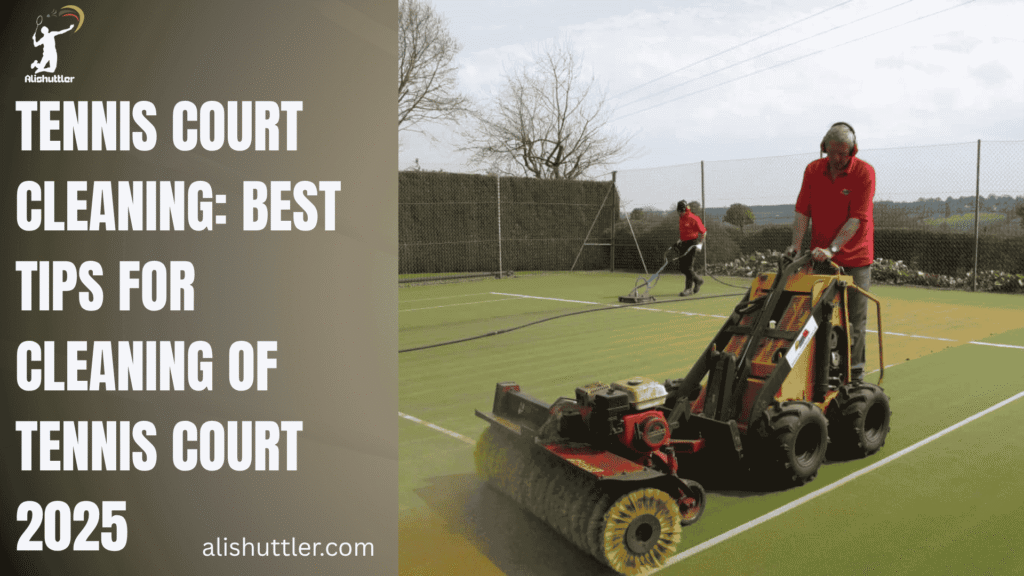
If the court exhibits deep cracking or heavy wear, schedule resurfacing. This is typically required every 4–8 years, but the more heavily used courts may need it earlier.
Go over your entire year’s worth of cleaning and repair notes. Tweak the upkeep schedule if problems keep arising.
Schedule upgrades or updates–such as new nets or upgraded lighting–to maintain the facility safe and appealing.
Beyond The Baseline
Tennis court cleaning is above and beyond court care, as proper tennis court maintenance includes everything outside of the court—such as drainage and lighting—that informs playability and the club experience. Diligent maintenance, including the use of a tennis court cleaning solution, extends to handling what surrounds the court, buttressing both utility and club culture.
Drainage Systems
Blocked or slow drains can wreck a tennis court quick. Periodic inspections can identify debris that could clog pipes or grates. Clay courts, in particular, are damaged if water remains. Daily checking, at many clubs, is employed to prevent surface degradation.
If water puddles after a rain or heavy use, immediate action prevents moss growth and maintains safe play. Occasionally, courts require additional drains or modified slope if the issue persists. Good drainage not only saves time and money, it allows members to enjoy consistent quality – crucial at country clubs where expectations are strong.
Surrounding Flora
Trees and shrubs look wonderful but can be a pain when limbs overhang or leaves drop onto the court. Scheduled trimming is essential. Large clubs tend to choose low maintenance plants that shed less to reduce cleanup.
Weeds by the fence line or in cracks can grow quick, so weed barriers or natural ground covers help keep it clean. Sweeping up leaves and twigs isn’t just for appearance—the organic debris retains water and can cause slipping on clay courts. Clean perimeters mean less work for maintenance crews and stop fights with league players who don’t handle facilities lightly.
For clubs, appropriate plant selections and maintenance preserve both member safety and club image.
Fencing and Nets
Built to last, this dependable perimeter fencing prevents balls from straying and protects the safety of players. It should be routinely inspected for rust, exposed wires, or jagged edges that might cause injury.
A clean net matters as well, as dirt can bog it down and alter the bounce on balls. Most clubs swap out nets that get worn or damaged to keep matches fair. Fencing can’t get in the way of play, so ensuring that it stands straight and isn’t leaning into the court is part of regular inspections.
These specifics count for casual matches as well as club tournaments.
Lighting Fixtures
Lights need to be effective for night games or overcast days. Inspect fixtures for dirt or bugs that dim the light. Change bulbs immediately when they burn out.
Clean covers maximize how much light reaches the court. Layout of the lights counts – they should distribute light, not have dark edges. Good lighting is a fundamental necessity, not a luxury, for clubs seeking to satisfy shifting member demands.
The Financial Game
Tennis court cleaning isn’t just an obligation—it’s an investment that defines the court’s worth for years to come. Just as every tennis player encounters a distinct challenge on the court, each facility or homeowner has different financial objectives and means. Striking the right balance between short-term wins and long-term investment can make a real difference.
Savvy scheduling, driven by discipline and occasionally professional consultation, contributes to keeping the court secure, playable, and economical.
Proactive Budgeting
Regular maintenance isn’t just about maintaining the court, it’s about budgeting for expenses. Budget consistently for routine cleaning as well as emergency fixes, because random destruction from weather or wear is inevitable.
Professional cleaning prices depending on size and surface type. Shop around for local rates and compare them with the expense of purchasing or leasing cleaning equipment. Consider one-time and recurring supply costs.
A reserve fund for bigger repairs, such as resurfacing is important. Even well-maintained courts require significant repairs every few years, and having these funds available alleviates stress when the time arises.
Monitor all expenses and observe spending trends. If expenses increase, modify the budget. Pivoting to new realities, such as a surge in users or a decline in capital, keeps the sustenance model grounded.
DIY vs. Professional
| Approach | Pros | Cons |
|---|---|---|
| DIY Cleaning | Lower upfront cost, flexible schedule | Time-consuming, requires effort and skill |
| Professional | High-quality results, expert guidance | Higher fees, less flexible timing |
Cleaning yourself is a money saver, but it does take time and labor. It’s good for skilled and available. Errors resulting in additional expenses or harm can occur.
Professional services provide deep cleaning and spot early wear. Experts employ equipment and solvents not available in most households. This selection plays well for busy schedules or high court usage.
Take into account court size, surface, and frequency of use. Some courts require little more than seasonal cleaning, while others gain from expert assistance more frequently.
Long-Term Value
Regular cleaning extends the court’s lifespan. Dirt, mold, and debris can accelerate wear, so consistent maintenance leads to less major servicing later.
There’s a peace of mind investing in quality work from pros. It’s like having a coach that knows what to look for and helps you avoid expensive errors. Players receive a more safe, more dependable playing surface, enhancing enjoyment and court utilization.
Long-term, intelligent maintenance is frugal. It’s not necessarily what you pay today, it’s what you get for years of use.
Tracking Expenses
Track every cost, from cleaning supplies to contractor bills. Review spending often and compare it to the budget.
Update your plan if costs change. Good tracking keeps the court and your finances in shape.
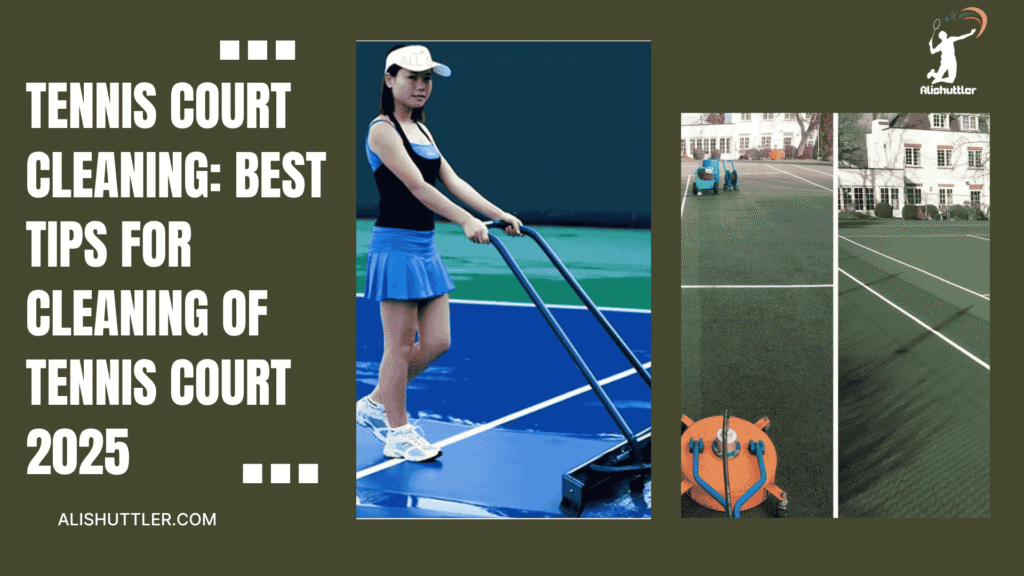
Final Thoughts
Clean courts are fair play, less slips and prolonged court life. Dust, dirt, and mold can appear quickly, so a regular cleaning schedule keeps things healthy and attractive. Hard courts, clay and grass all require individually necessary steps. Basic stuff–broom, hose, mild soap–will do the bulk of the job.
Routine maintenance pays off and keeps match going. Well-kept courts allow players to concentrate on their game, not their footing. If you want to keep your court or club in top shape, establish a regular cleaning schedule and adhere to it. Got your own tips or cleaning victories? Let’s join hands to help tennis courts stay in prime condition.
Frequently Asked Questions
How often should a tennis court be cleaned?
Tennis courts require surface cleaning at least once a week; this routine maintenance not only extends the court’s life but also ensures safety for play.
What tools are essential for cleaning a tennis court?
Utilize a soft-bristle broom, garden hose, and non-abrasive squeegee with an appropriate tennis court cleaning detergent to effectively assist in surface cleaning without damaging the court.
Are cleaning methods different for clay, hard, and grass courts?
Yeah, each tennis court surface requires specialized attention; for instance, clay court maintenance involves brushing, while hard acrylic surfaces benefit from gentle washing.
Why is regular tennis court cleaning important?
Routine surface cleaning prevents mold, algae, and debris from accumulating, ensuring the tennis court remains safe, attractive, and playable for an extended duration, supporting proper tennis court maintenance.
Can I use a pressure washer on a tennis court?
Apply a surface cleaning machine only to hard acrylic surfaces and at low pressure. High pressure can hurt tennis court surfaces, so always heed manufacturers’ recommendations.
What are the financial benefits of cleaning a tennis court?
Regular tennis court cleaning, including the use of a specialized tennis court cleaning machine, minimizes repair expenses and increases the court’s longevity, preserving its value.
What should I avoid when cleaning a tennis court?
Steer clear of harsh chemicals, metal tools, and high-pressure washing, as they can damage the tennis court surface and lead to premature surface deterioration.

